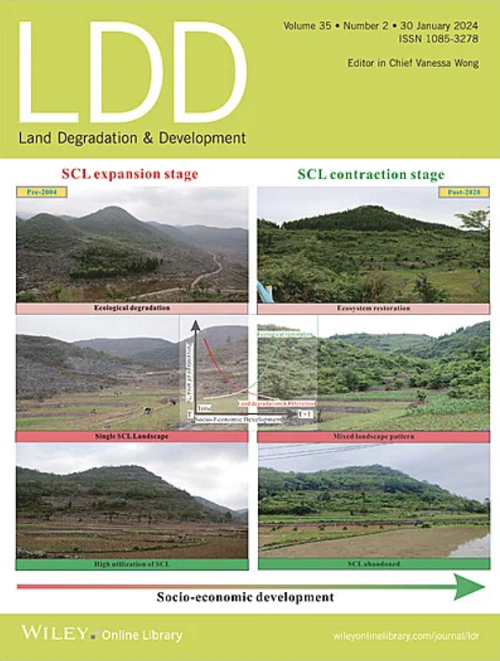Soil Carbon Cannot Efficiently Accumulate in Sand‐Based River Valley
IF 3.6
2区 农林科学
Q2 ENVIRONMENTAL SCIENCES
引用次数: 0
Abstract
River valley is traditionally thought a landform with efficient soil carbon accumulation, because it is generally a low‐lying wetter area relative to surrounding landforms. However, soil carbon has been less studied in sand‐based river valley of arid and semi‐arid regions. This study was to mainly understand the capacity of soil carbon accumulation in sand‐based Xilin River valley in arid and semi‐arid Mongolia Plateau by comparing with the surrounding steppe and sandland. We found that soil carbon storage per unit area sequenced in steppe > meadow > sandland, which was inversely associated with soil sand fraction. Soil carbon storage in river valley meadow was close to the mean value in three landforms, without significant difference between both. River valley wetland and water body were also synthesized at weak soil carbon accumulation. These results can be concluded that soil carbon accumulation in the low‐lying Xilin River valley had no predominance relative to the surrounding high‐lying landforms. Sand‐based soils are more aerated than loamy and clayey soils, and their organic carbon is more easily decomposed. Again, sand‐based soils are mainly composed of silicate; their low quantities of organic and inorganic carbons are further mineralized and dissolved by water erosion in the river valley, respectively. Furthermore, low plant productivity, arid and semi‐arid climate, weak sediment transport, and deposition cannot efficiently promote soil carbon accumulation. We suggest that river valley cannot be overestimated in evaluating the storage of soil carbon in arid and semi‐arid regions.求助全文
约1分钟内获得全文
求助全文
来源期刊

Land Degradation & Development
农林科学-环境科学
CiteScore
7.70
自引率
8.50%
发文量
379
审稿时长
5.5 months
期刊介绍:
Land Degradation & Development is an international journal which seeks to promote rational study of the recognition, monitoring, control and rehabilitation of degradation in terrestrial environments. The journal focuses on:
- what land degradation is;
- what causes land degradation;
- the impacts of land degradation
- the scale of land degradation;
- the history, current status or future trends of land degradation;
- avoidance, mitigation and control of land degradation;
- remedial actions to rehabilitate or restore degraded land;
- sustainable land management.
 求助内容:
求助内容: 应助结果提醒方式:
应助结果提醒方式:


